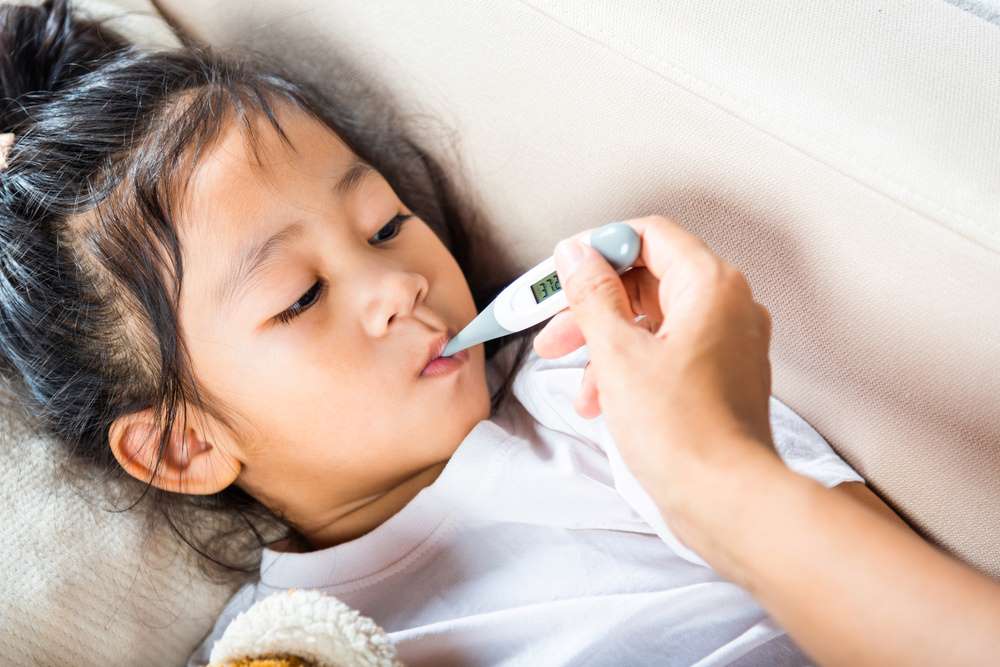
Illnesses can creep up on anyone anytime, but children are said to be more vulnerable to catching infections than adults.
Most children tend to run around and play all day and the next moment they have a spiking fever – giving parents or caregivers the indication that they may be sick.
The body has a built-in mechanism to help regulate its temperature. This could go haywire when the child needs to fight off infection, leading to increased body heat. These bodily temperature increases and decreases are measured using a thermometer.
It’s recommended that parents should know that there are healthy temperature ranges. Outside of these normal ranges, it could be an indication of a health problem. Unfortunately, not many parents know how to use and read a thermometer to take their child's temperature accurately.
To help out, indicated below are some steps to assist parents like you on how to properly take your kid’s temperature using a thermometer. Keep on reading to learn more.
-
Choose The Correct Type Of Thermometer
Having a thermometer in the home is a must when children may need monitoring. There are different types of thermometers that parents can choose from, but not all of them will be equally accurate. And parents should always opt for the best quality that they can afford.
Digital thermometers, mercury and glass thermometers, and others are all excellent to use. The trick is to use them for the correct age range and according to the instructions indicated on the device’s packaging.
During the first three months of a child's life, a digital thermometer or a rectal thermometer is believed to be the best way to determine child temperature. However, babies aged three months to four years will show accurate results with those or a regular armpit or digital ear thermometer. Older children can use thermometers under the tongue for a more precise temperature reading.
-
Carefully Take The Temperature
Before taking the temperature, ensure that the thermometer is working, that the temperature display is at zero, and others. Each of the different devices will have its method parents should use to ensure they’re doing it correctly:
-
Rectal Thermometers
The child should be lying on their stomach or back while the parent supports the child and prevent them from moving around.
Gently insert the thermometer tip and hold it in place until it gives a child temperature reading. Never force the thermometer in; consider another method if it becomes too challenging to use.
-
Digital Thermometers
Depending on the type of thermometer, parents should read and follow the instructions on the leaflet that accompanies the temperature-taking device. Some devices will read forehead temperature, under the armpits or tongue, or inside the ear, so parents should double-check which thermometer they have to avoid misusing it.
-
Mercury Thermometers
These thermometers work best under the tongue or armpit while touching the skin. Older children who can follow instructions to keep the thermometer in place for at least five minutes will benefit from this method. Why? The mercury needs time to heat up and settle at the final temperature. Hence it needs to be in place for longer.
-
Temperature Strips
These are relatively safe to use at any age, although most are disposable which makes them a more expensive way of checking a youngling's fever. The parent should place the strip on the forehead of the child and keep it in place for around five minutes or less, depending on when the reading stops climbing.
A fever shouldn't exceed 100 F or 38 C for children younger than three months, while older children should have a temperature below 102 F or 38.9 C. Parents should seek immediate medical help for their children whenever the temperature exceeds these limits.
-
Make A Note Of The Temperature
When a child has a fever, the parents will immediately start to worry, which sends their stress levels through the roof. Although it may seem like the best way to safeguard their kid, they should remain calm and cool-headed enough to note when they took the temperature, how much it was, and whether they gave medications. The information will assist the medical practitioner in effectively treating the child for whatever the cause of the fever is.
If parents monitor their children every fifteen minutes at night, they should keep track of the temperature readings and supply all the information to the doctor once they get an appointment. Doing this will give the doctor an idea of how the illness progresses so they can consider it when diagnosing.
To Conclude
Taking a child's temperature is a necessity, and parents should always ensure to have the proper device handy to do the job. Children could easily feel the adverse effects of very high temperatures, making it essential for parents to understand how to take body temperatures and read the results correctly. If in doubt, contact a medical professional instead that’ll give the best advice and prescribe the treatment your child would need to get better.



























